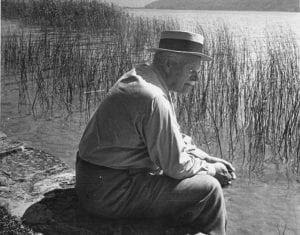\\
No. I cannot occupy myself with modern art any more. It is too awful.
That is why I do not want to know more about it.’
At one time I took a great interest in art. I painted myself, sculpted and did wood carving.
I have a certain sense of color.
When modern art came on the scene, it presented a great psychological problem for me.
Then I wrote about Picasso and Joyce.
I recognized there something which is very unpopular, namely the very thing which confronts me in my patients.
These people are either schizophrenics or neurotics. Neurotics smart under the problems of our age.
They smart under the conditions of its time.
Art derives its life from and expresses the conditions of our time. In that sense art is prophetic.
It speaks as the plant speaks of nature and of the earth, of ground and background. My patients make similar pictures.
When they are in a chaotic state, all forms dissolve. Then panic grips them.
Everything threatens to fall to pieces and we are in a state of panic—though it is an unadmitted panic. What does this art say?
This art is a flight from the perceptible world, from the visible reality. What does it mean, to turn one’s eye inward?
The first thing people see there is the debris of destruction, and the infantilism of their own souls.
That is why they imitate the tyro.
People admire the art of the primitives. True, it is art, but it is primitive.
Or one imitates the drawings of children. The schizophrenics do that too.
To the extent that it is a manifestation of a yearning for the primary it may have a positive value. But dissolution demands synthesis.
And I am always concerned with the pile of wreckage, with the ruins of that which has been, with infantile attempts at something new. Carl Jung, C.G. Jung Speaking: Interviews and Encounters, Pages 219-224


No comments:
Post a Comment